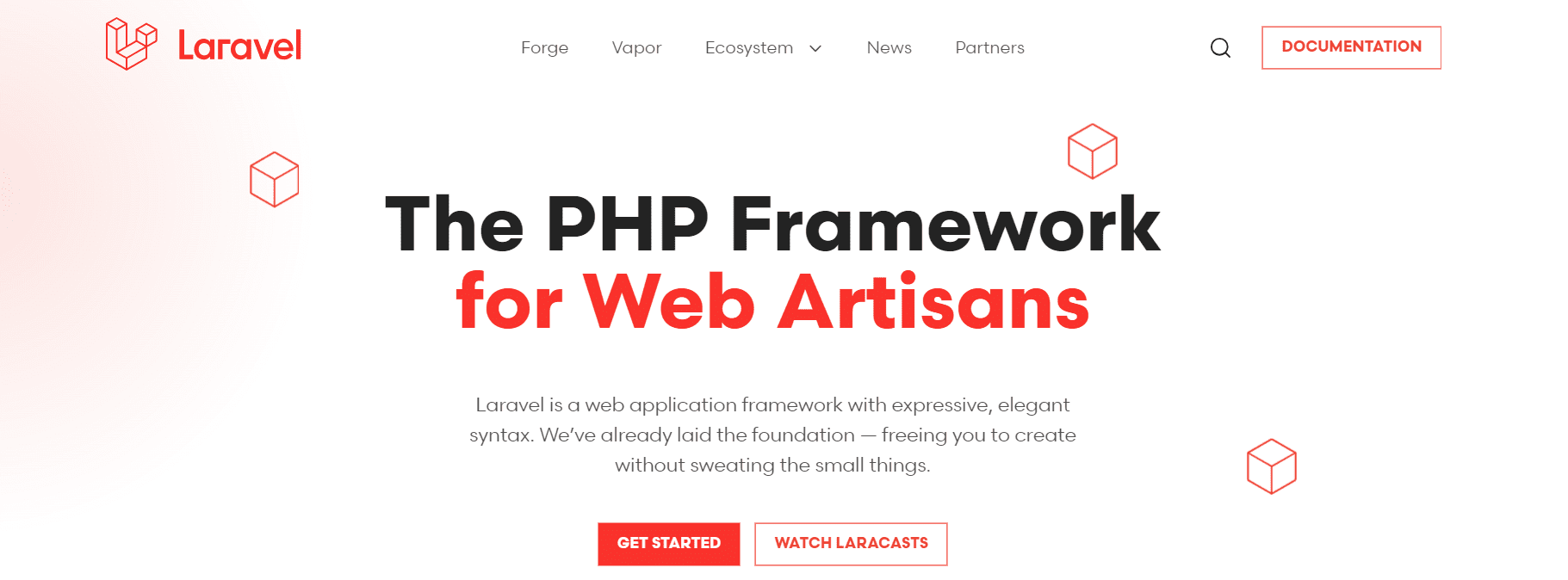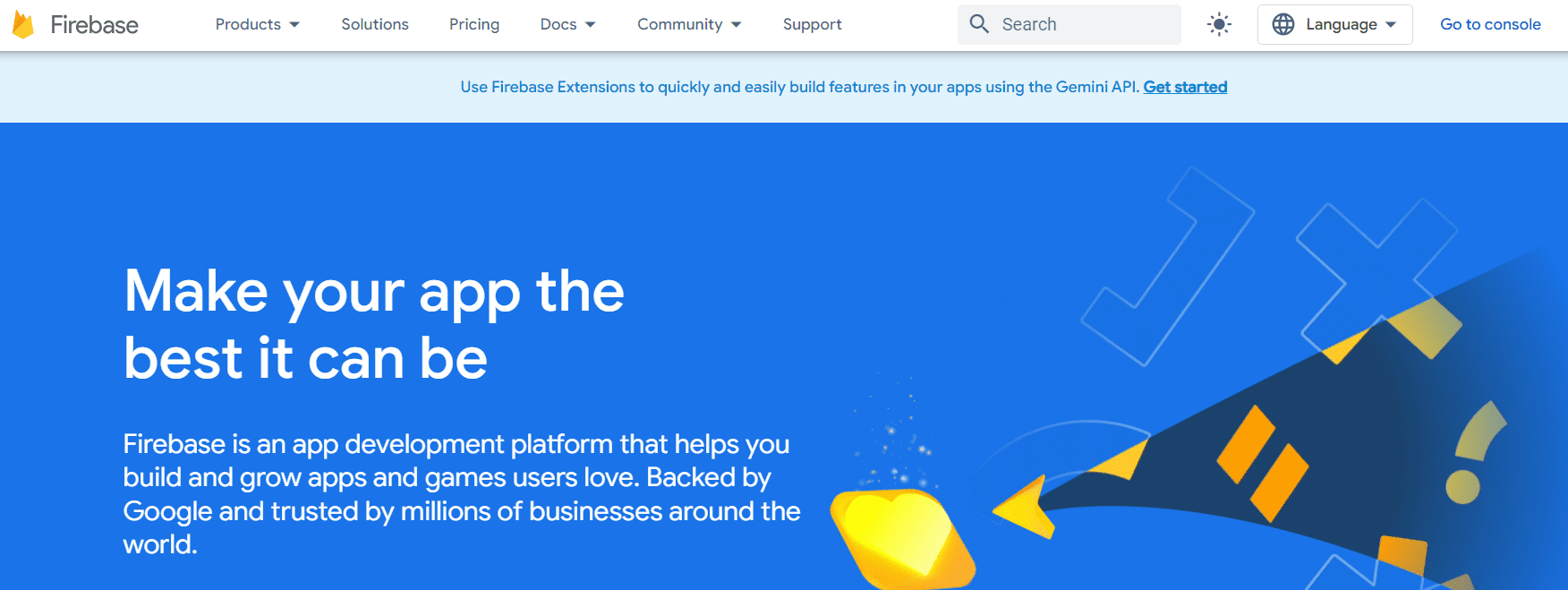The synergy between frontend and backend technologies plays a pivotal role in shaping robust and scalable applications. Regarding building dynamic and interactive user interfaces, Vue.js stands out as one of the most preferred frontend frameworks due to its simplicity, flexibility, and performance. However, to harness the full potential of Vue.js, choosing the right backend technology is crucial. In this comprehensive guide, we delve into the most popular backend options for Vue.js apps, exploring their features, advantages, and drawbacks to help you make an informed decision.
What is Vue.js, and Why is it Used?
Before diving into backend options, let’s briefly understand what Vue.js is and why it has gained immense popularity among developers worldwide. Vue.js is an open-source JavaScript framework for building user interfaces and single-page applications. Developed by Evan You in 2014, Vue.js has rapidly emerged as a go-to choice for developers due to its progressive nature, ease of integration, and gentle learning curve.
Developers favor Vue.js for its simplicity and versatility. Here are some key reasons why Vue is widely used:
- Ease of Learning: Vue’s syntax and structure are intuitive, making it easy for developers to grasp, especially those transitioning from other frameworks like Angular or React.
- Performance: Vue offers excellent performance with its lightweight core and efficient rendering mechanism. It ensures smooth and fast user experiences, even for complex applications.
- Large Ecosystem: Vue has a rich ecosystem comprising libraries, plugins, and tools that extend its functionality. This vibrant community support makes development faster and more efficient.
- Official Tooling: Vue provides official tooling such as Vue CLI (Command Line Interface) and Vue DevTools, which streamline the development process and facilitate debugging.
Advantages of Vue.js:
- Simplicity: Vue.js adopts a minimalistic approach, making it easy for developers to grasp its concepts and integrate them into projects smoothly.
- Flexibility: With Vue.js, developers can scale their applications from simple prototypes to large-scale enterprise solutions without compromising performance.
- Reactivity: Vue.js leverages a reactive data-binding mechanism, allowing developers to build dynamic and interactive user interfaces effortlessly.
- Component-Based Architecture: Vue.js follows a component-based architecture, enabling developers to encapsulate reusable UI elements and promoting code reusability and maintainability.
- Thriving Ecosystem: Vue.js boasts a vibrant ecosystem with many plugins, extensions, and community-driven resources, empowering developers to enhance their productivity and build feature-rich applications efficiently.
Best Backend options for Vue.js apps
Now that we’ve established the significance of Vue.js in frontend development, let’s explore the most popular backend options that flawlessly complement Vue.js applications:
1. Rails
Ruby on Rails (Rails) is a powerful backend framework that emphasizes convention over configuration, accelerates development, and promotes code consistency. With its robust ecosystem and community support, Rails is famous for building backend services that integrate with Vue.js frontend applications.
Features:
- MVC Architecture: Rails follows the Model-View-Controller (MVC) architecture, promoting code organization and separation of concerns.
- Convention over Configuration: Rails embraces the “convention over configuration” principle, reducing the need for manual setup and configuration.
- Active Record: Rails incorporates Active Record, an ORM (Object-Relational Mapping) framework that simplifies database operations and enhances developer productivity.
- Scaffolding: Rails offers scaffolding tools that generate boilerplate code for CRUD operations, accelerating the development process.
- Strong Community Support: Rails boasts a robust community of developers and enthusiasts, ensuring timely updates, bug fixes, and a rich repository of libraries and gems.
Pros:
- Convention over configuration promotes rapid development.
- Rich ecosystem with many gems for extending functionality.
- Strong community support and extensive documentation.
Cons:
- Performance might be a concern for extremely high-traffic applications.
- Updates can sometimes lead to compatibility issues with older codebases.
2. Django
Django, written in Python, is a high-level web framework known for its simplicity, versatility, and scalability. With its built-in features and robust ecosystem, Django provides a solid foundation for building backend services that power Vue.js frontend applications.
Features:
- Object-Relational Mapping (ORM): Django incorporates a robust ORM layer that abstracts database operations and facilitates interaction with relational databases.
- Admin Interface: Django provides a built-in admin interface, enabling developers to perform CRUD operations on application data without writing custom code.
- Authentication and Authorization: Django offers comprehensive authentication and authorization mechanisms, including user authentication, permissions, and session management.
- Django REST Framework: Django’s REST framework simplifies the development of RESTful APIs, making it easy to build web services for Vue.js frontend applications.
- Scalability: Django’s modular architecture and support for horizontal scaling make it suitable for handling high-traffic applications and large datasets.
Pros:
- Highly scalable and efficient framework, suitable for large-scale projects.
- Batteries-included approach, providing built-in features like authentication, admin panel, etc.
- Excellent documentation and strong community support.
Cons:
- Learning curve can be steep, especially for those new to Python or web development.
- Limited flexibility compared to microframeworks like Flask.
3. ExpressJS
ExpressJS, known for its minimalist design and flexibility, is popular for building backend services that complement Vue.js frontend applications. With its lightweight architecture and robust middleware ecosystem, ExpressJS enables developers to create scalable, high-performance APIs for Vue.js applications.
Features:
- Minimalist Framework: ExpressJS is a minimalist web framework for Node.js, providing essential features for building web applications and APIs.
- Middleware Support: ExpressJS offers middleware support, allowing developers to extend and customize the request-response cycle with reusable middleware functions.
- Routing: ExpressJS provides a flexible routing mechanism for defining application endpoints and handling HTTP requests with ease.
- Template Engines: ExpressJS supports various template engines, such as EJS and Handlebars, for rendering dynamic content on the server side.
- Scalability: ExpressJS’s lightweight and modular design makes it well-suited for building scalable backend services that integrate seamlessly with Vue.js frontend applications.
Pros:
- Lightweight and minimalist framework, ideal for building RESTful APIs and single-page applications.
- Unparalleled flexibility, allowing developers to structure applications as they see fit.
- Massive ecosystem of middleware and plugins for extending functionality.
Cons:
- Lack of built-in features compared to full-fledged frameworks like Django or Rails.
- Limited support for MVC architecture out of the box, requiring additional modules for structured development.
4. Laravel
Laravel, a PHP framework known for its elegant syntax and rich ecosystem, is popular for building backend services that power Vue.js frontend applications. With its expressive APIs, built-in features, and robust ecosystem, Laravel provides developers the tools they need to create scalable and maintainable applications.
Features:
- MVC Architecture: Laravel follows the Model-View-Controller (MVC) architecture, providing a structured approach to building web applications.
- Eloquent ORM: Laravel incorporates Eloquent, a powerful ORM (Object-Relational Mapping) framework that simplifies database interactions and enhances developer productivity.
- Blade Templating Engine: Laravel includes Blade, a powerful templating engine that simplifies the creation of dynamic and reusable views.
- Artisan CLI: Laravel offers Artisan a command-line interface that automates repetitive tasks such as database migrations, testing, and code generation.
- Laravel Mix: Laravel Mix simplifies asset compilation and management, allowing developers to use modern JavaScript and CSS preprocessors with ease.
Pros:
- Elegant syntax and powerful features like Eloquent ORM make development enjoyable and efficient.
- Comprehensive documentation and Laracasts provide excellent learning resources.
- Active community and ecosystem with many packages available via Composer.
Cons:
- Performance overhead compared to micro frameworks like Lumen.
- Can feel bloated for small projects due to its extensive feature set.
5. Firebase
Firebase, a comprehensive platform for building mobile and web applications, offers backend services that seamlessly integrate with Vue.js frontend applications. With its real-time database, authentication services, cloud functions, and hosting capabilities, Firebase provides developers with a scalable and serverless backend solution for Vue.js applications.
Features:
- Realtime Database: Firebase offers a NoSQL cloud database that synchronizes data in real time across clients, enabling developers to build responsive and collaborative applications.
- Authentication: Firebase provides authentication services, including email/password authentication, social sign-in, and federated identity providers, making it easy to secure Vue.js applications.
- Cloud Functions: Firebase Cloud Functions allow developers to run server-side code responding to events triggered by Firebase features or HTTP requests, enabling serverless backend logic.
- Hosting: Firebase Hosting provides a secure and scalable hosting solution for Vue.js applications, with built-in SSL, CDN, and continuous deployment integration.
- Analytics and Monitoring: Firebase offers analytics and monitoring tools that enable developers to gain insights into user behavior, performance metrics, and application errors.
Pros:
- Serverless architecture eliminates the need for managing infrastructure, making deployment straightforward.
- Real-time database and authentication services are smoothly integrated.
- Scalable, with built-in support for handling spikes in traffic.
Cons:
- Vendor lock-in, limiting flexibility and potentially increasing costs as the project scales.
- May not be suitable for complex backend logic or applications requiring fine-grained control over resources.
6. Serverless
Serverless computing, characterized by its event-driven and scalable nature, offers a compelling backend option for Vue.js applications. With its pay-per-use pricing model, automatic scalability, and simplified operations, server less architectures empower developers to build scalable, cost-effective backend services that seamlessly integrate with Vue.js frontend applications.
Features:
- Scalability: Serverless architectures automatically scale to handle incoming traffic and accommodate fluctuating workloads, ensuring optimal performance and cost efficiency.
- Pay-Per-Use Pricing: Serverless platforms charge based on actual usage metrics such as function invocations, execution time, and resource consumption, eliminating the need for provisioning and managing infrastructure.
- Event-Driven Architecture: Serverless applications are built around event-driven architectures, with functions triggered by HTTP requests, database changes, or messaging events.
- Stateless Functions: Serverless functions are stateless and ephemeral, meaning they do not maintain persistent connections or state between invocations, promoting scalability and fault tolerance.
- Ecosystem Integration: Serverless platforms offer integrations with various third-party services, APIs, and event sources, enabling developers to build fully functional applications without managing infrastructure.
Pros:
- Cost-effective, as you only pay for the resources you use.
- Automatic scaling handles traffic spikes effortlessly.
- Simplified deployment and maintenance, with no need to manage servers.
Cons:
- Cold start latency can impact performance for certain types of applications.
- Debugging and monitoring can be challenging in serverless environments.
7. WordPress
WordPress, originally a blogging platform, has evolved into a versatile content management system (CMS) with extensive customization options and a thriving ecosystem of plugins and themes. With its REST API and headless CMS capabilities, WordPress provides a compelling backend solution for Vue.js applications, enabling developers to leverage its content management features and infrastructure.
Features:
- Content Management: WordPress provides a robust content management system (CMS) with intuitive editing tools, media management, and customizable themes and plugins.
- REST API: WordPress offers a RESTful API that enables developers to interact programmatically with WordPress content, users, and settings, making it suitable for headless CMS architectures.
- Extensibility: WordPress’s plugin architecture allows developers to extend and customize its functionality with thousands of free and premium plugins in the WordPress repository.
- User Management: WordPress provides comprehensive user management features, including user roles, permissions, and authentication mechanisms, making it suitable for building membership sites and web applications.
- Community Support: WordPress boasts a large and active community of developers, designers, and users who contribute to its development, provide support, and share resources.
Pros:
- User-friendly interface, making it easy for non-technical users to manage content.
- Extensive plugin ecosystem allows for easy customization and expansion of functionality.
- Large community of developers and resources available for support.
Cons:
- Security vulnerabilities due to its popularity and the use of third-party plugins.
- Customization beyond basic themes and plugins can be complex and may require deep knowledge of PHP.
8. Java
Java, renowned for its scalability, performance, and enterprise integration capabilities, is a popular choice for building backend services that power Vue.js frontend applications. With its robust ecosystem of frameworks, libraries, and tools, Java provides developers with the tools they need to create scalable, reliable, high-performance applications.
Features:
- Object-Oriented: Java is an object-oriented programming language that provides features such as encapsulation, inheritance, and polymorphism for building modular and reusable code.
- Scalability: Java’s robust concurrency model and support for multithreading make it well-suited for building scalable backend services that handle concurrent requests and large workloads.
- Enterprise Integration: Java offers comprehensive support for enterprise integration, with frameworks such as Spring and Hibernate providing solutions for dependency injection, ORM, and data access.
- Performance: Java’s Just-In-Time (JIT) compilation and bytecode execution model optimize performance, making it suitable for high-performance applications and distributed systems.
- Community Support: Java benefits from a large and active community of developers, contributors, and enthusiasts who provide support, documentation, and third-party libraries.
Pros:
- Robust and scalable, suitable for building enterprise-grade applications.
- Strong type system and extensive libraries promote code reliability and maintainability.
- Widely adopted in the industry, with a large talent pool and ecosystem.
Cons:
- Verbosity of syntax can lead to boilerplate code and slower development cycles.
- Memory consumption can be higher compared to other languages like Go or Node.js.
9. Golang
Go (Golang), known for its simplicity, performance, and concurrency support, is gaining popularity as a backend language for building scalable and efficient services that complement Vue.js frontend applications. With its minimalist syntax, efficient runtime, and comprehensive standard library, Go provides developers with the tools they need to create robust, high-performance applications.
Features:
- Concurrency: Go (Golang) provides built-in support for concurrency through goroutines and channels, enabling developers to write highly concurrent and scalable backend services.
- Performance: Go’s compiled nature and efficient runtime make it ideal for building high-performance applications that handle large workloads and concurrent requests.
- Simplicity: Go’s minimalist syntax and language features promote simplicity and readability, reducing cognitive overhead and making it easy for developers to write and maintain code.
- Standard Library: Go’s standard library provides comprehensive support for networking, HTTP handling, encryption, and other everyday tasks, reducing the need for external dependencies.
- Cross-Platform: Go’s compiler produces standalone binaries with no runtime dependencies, enabling applications to run seamlessly across different platforms and environments.
Pros:
- Fast execution speed and low memory footprint make it ideal for building high-performance applications.
- Simple and concise syntax, promoting readability and maintainability of code.
- Built-in support for concurrency with goroutines and channels.
Cons:
- Relatively smaller ecosystem compared to more established languages like Java or Python.
- Lack of generics can lead to code duplication in certain scenarios.
Conclusion
In conclusion, choosing the right backend technology is crucial for building robust and scalable Vue.js applications. The backend options discussed in this guide offer diverse features, advantages, and drawbacks, catering to different project requirements, preferences, and skill sets. Whether you opt for a full-stack framework like Rails or Django, a lightweight framework like ExpressJS, a serverless architecture, or a language-specific solution like Java or Golang, it’s essential to consider factors such as scalability, performance, ease of development, and community support. By evaluating the pros and cons of each backend option in the context of your project goals and constraints, you can make an informed decision that ensures the success of your Vue.js application.













